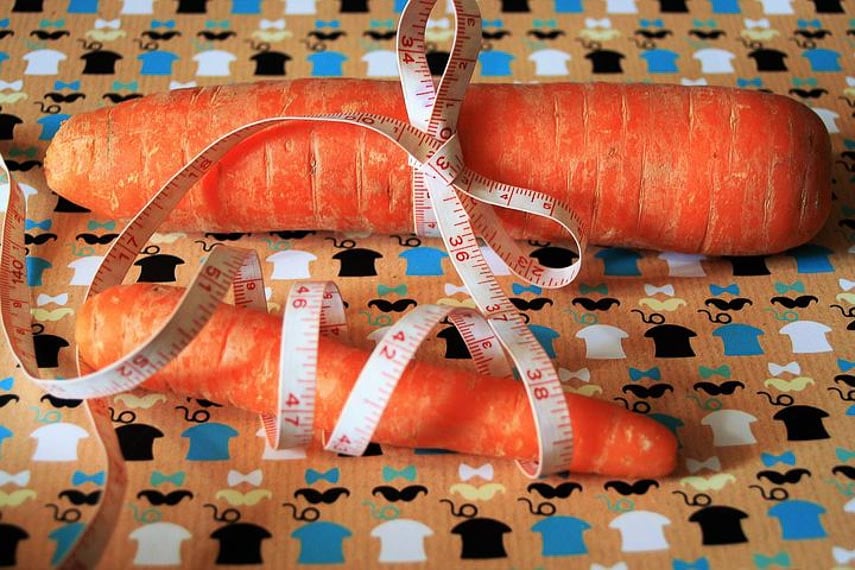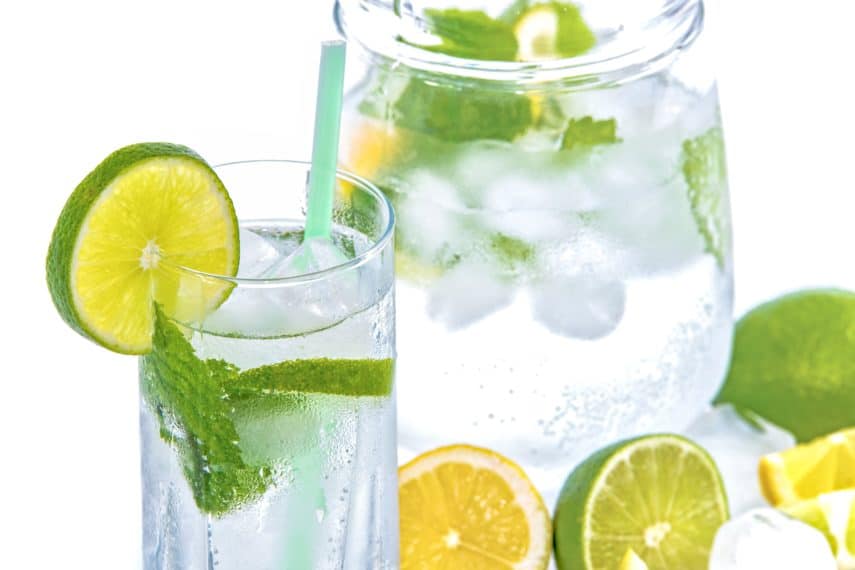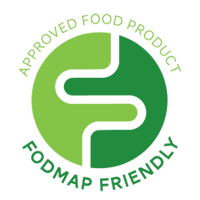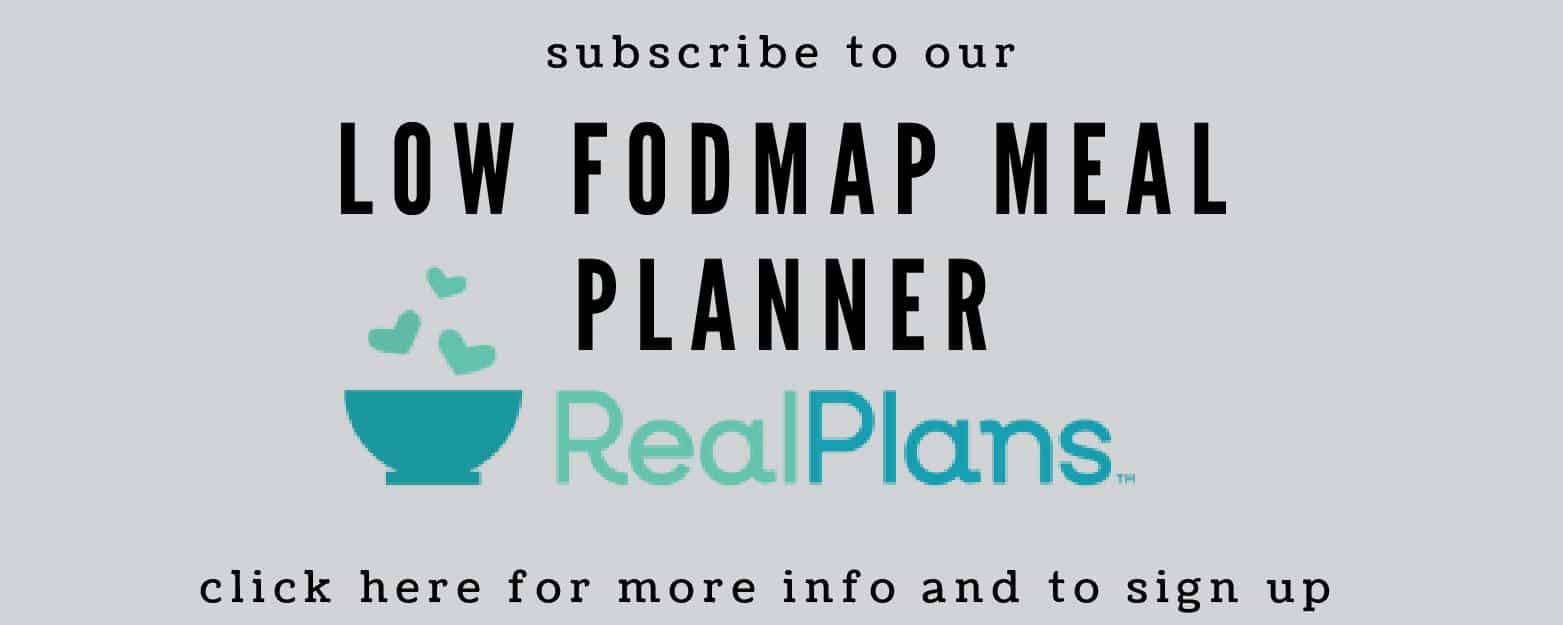Fodmap Diet Plan to Lose Weight
Weight Management Series
In this installment of our Weight Management and the Low FODMAP Diet Series, my intent is to provide nutrition recommendations to help one achieve a healthy weight*.
It is not uncommon to experience mild weight loss during the Low FODMAP Elimination Phase often due to smaller portions and food restrictions, which for some may be desired.
For those struggling to maintain a healthy weight or who want to gain weight, please refer to my article, How to Gain Weight on The Low FODMAP Diet article as a helpful resource.
If you are trying to achieve a lower healthier weight please refer to the article below, How to Lose Weight on the Low FODMAP Diet. It is encouraged to wait until completion of the low FODMAP Eliminate and Challenge Phase before pursing weight reduction for reasons stated below.
*A 'healthy' weight is determined by you and your professional health team – not by society.

How to Lose Weight on the Low FODMAP Diet
The low FODMAP diet is not considered a weight reduction diet, however some experience weight fluctuations as a result of restricting or expanding their food choices. Most dietitians agree that one should not pursue active weight loss during the Low FODMAP Elimination Phase and Challenge Phase.
Why? Both of these diets require attention to detail and prioritization given to new dietary patterns and food choices. Trying to tackle both simultaneously can be very challenging and possibly decreasing your success rate with both goals.
If you have a dual objective of controlling your IBS symptoms and weight loss it is highly recommended to complete the low FODMAP elimination and challenge phase FIRST.
A Dietitian Can Help
Over the past two decades I have worked with thousands of clients seeking weight loss via diet and exercise, weight loss medications, and bariatric surgery. In the past four years my focus has grown to include a specialization in the FODMAP diet and IBS.
As many of us know weight loss and weight maintenance is hard, really hard. Nutrition science continues to evolve in both of these fields and a FODMAP trained RD can help devise a personalized approach and help you along this journey for optimal response.
Despite the dozens of diets available and new weight loss medications obesity remains an epidemic. Even drastic approaches such as bariatric surgery are not fool proof, weight regain happens. The pendulum continues to shift with the various weight loss approaches.
Twenty years ago it was the low fat craze and now the complete opposite Ketogenic diet (a diet very high in dietary fat) is popular – I recommend neither.
You may want to read: The Keto Diet and IBS: A Closer Look and Don't Fall For These 5 IBS Diet Fads!
Weight loss recommendations vary greatly and unfortunately personal bias sets the tone for many. Dietitians teach evidence based nutrition which often involves making lifestyle changes that are realistic and attainable. The truth of the matter is that fad diets for weight reduction rarely equal long-term weight loss success.
The low FODMAP diet is by no means a fad diet, but rather a science based approach of reducing gastrointestinal symptoms associated with IBS. To find a dietitian near you check out our Registered Dietitian Directory.
So What Can You Do?
Here are some tips that may help you achieve weight loss once you have completed the low FODMAP Elimination and Challenge phases.
Watch Your Portions
Portion control is essential on the low FODMAP diet since larger portions can exceed safe thresholds making a low FODMAP food high FODMAP. Minimizing intake of processed carbohydrates can help trim your waist line since these often lack fiber and contain excessive sugar making it easier to overindulge.
Many of the foods in the low FODMAP Monash app are listed in grams or ounces therefore a digital food scale or even measuring cups and spoons can help bring awareness to appropriate and healthy (for you) serving sizes.
You may want to read: What Is FODMAP Stacking? and What Is A Low FODMAP Serving Size?
Eat at Regular Times
Aim for three meals and 1 to 2 snacks during the day while eliminating or greatly reducing late night snacking. Skipping meals and eating large portions can trigger IBS symptoms and contribute to weight gain. Going long periods of time without food can negatively affect the metabolic rate, and in addition set us up to overeat and make poor food choices – low FODMAP or not.
Eating the majority of one's calorie in the evening and under eating during the day is an all too common eating pattern in those struggling with their weight.
Skipping breakfast and fueling yourself on caffeine all morning is counterproductive in managing both IBS and weight loss. Try to evenly distribute your calories throughout during the day. Big dinners and late night snacking are a recipe for weight gain and unhappy tummies. Bring awareness to why you snack – is this related to is hunger or habit? 1
You May Want To Read: IBS & Yoga Series: Kitchen Yoga
Stay Hydrated
Drink 64 to 80 ounces of water each day. Adequate hydration can aid in weight loss and improve digestive health. Inadequate fluid and fiber can make IBS-C symptoms worse. Try to have a measurable goal to ensure you are reaching 64 to 80 ounces (2 L to 2.4 L) each day.
You May Want To Read: Fiber and IBS: What You Need To Know
For example, I fill up my 32-ounce (960 ml) hydro flask two times every day plus drink additional fluids with meals.

Sleep 7 to 8 Hours a Night
Chronic sleep deprivation contributes to a slower metabolic rate, preference for larger portions, impulsive food behaviors, an increase in the hunger hormone that stimulates appetite and a decrease in the hormone that helps one feel full.
Sleep deprivation can strengthen your cravings for unhealthy snacks and consume extra calories, often greater than 250 calories.
You May Want To Read: How Does Sleep Impact IBS?
Poor sleep also appears to worsen next day IBS symptoms and those reporting poor sleep quality have higher incidences of IBS. 2 There is also strong evidence of increased sleep disorders among those individuals with IBS versus healthy individuals, which may be a contributing factor in the development of IBS. 3
Eat More Plants
Try to eat the rainbow and add color to your plate. Make an effort to include low FODMAP fruits and vegetables in safe portions with every meal.
Often times fiber intake dips on the low FODMAP elimination diet, work hard on including plant based fibers such as low FODMAP fruits and vegetables, strained and canned chickpeas and lentils, oats, brown rice, quinoa, sweet potatoes, and winter squash (all in low FODMAP amounts, of course).
Fiber helps one stay fuller longer and keeps constipation in check. The low FODMAP diet often limits intake of prebiotic fibers, which play an important role in gut health, consuming safe portion of many of the plant based fibers can help minimize this negative impact. For a list of our favorite low FODMAP prebiotic foods read this article.
You may want to read our Vegan and Low FODMAP Diet Series and Plant Based Nutrition and the Low FODMAP Diet
If you haven't yet read Fiber Fueled: Interview with Dr. B – Plant-Based Gut Health Expert you will want to do so.
Don't Forget the Protein
I often feel like a protein pusher. For starters proteins do not contain FODMAPs, but watch for high FODMAP ingredients such as garlic and onion that often lurk in the marinades and spice blends used to flavor meats. Most of us meet our protein needs, yet we consume the majority at dinner and often skimp on protein with breakfast and sometimes lunch.
Adequate protein intake at every meal can help minimize the loss of lean muscle mass, which often accompanies rapid weight loss, slightly increases metabolic demands, and lastly, protein makes one feel full longer. 4, 5.
Healthy low FODMAP protein options include chicken, turkey, fish, seafood, lean beef, turkey and chicken sausages (without garlic and onion), lactose free cottage cheese, yogurt, and kefir, strained and canned chickpeas and lentils, tofu, tempeh, and safe protein shakes or powders.
You May Want To Read: Low FODMAP Meal Replacements & Protein Shakes
Have a Plan
The hardest part of any diet change or new eating pattern is meal planning. We can all have good intentions; however, if we do not have a plan of action the likelihood of sticking with a new eating pattern is greatly reduced.
You May Want To Read: 5 Easy Steps To Change Any Habit
When blood sugar levels are plummeting and time is short we often reach for the easy choice, which is less likely to be the healthy choice and less likely to be low FODMAP. So what can we do… try to always have a plan for your next two meals.
At breakfast you should be thinking about dinner, maybe you need to pull out a food to defrost or stop at the store for a last minute item. Spend time on slow days to meal prep, grocery shop, and plan a few meals in advance.
Take short cuts such as buying precut fruit and vegetable trays or a low FODMAP compliant rotisserie chicken if time is limited. For ideas on how to prepare for changing some of your patterns this article may interest you.
Add Variety
I feel that many of us revert back to our old ways when we get bored or get stuck in a rut. It is important to add new recipes for inspiration and excitement with your new eating habits. (Go to our Recipes page right here at FODMAP Everyday® and use our filter to find what you want). Try to not get overwhelmed which is easy with the overabundance of recipes on the Internet.
Are you the kind of person who just can't plan a menu or just doesn't have time to figure this out? We've done it all for you! Check out our Low FODMAP Meal Planner over at Real Plans.
Try one new recipe or maybe even a new spice once a week; this is more achievable and will likely result in new foods in your meal rotation. We have a plethora of recipes to try, look for our "kiwi" icon to know that a recipe is Elimination Safe.
Eat Fermented Foods
There is limited evidence to support the use of probiotics for weight loss. Two small clinical studies demonstrated VSL # 3 prevented weight gain despite a significant increase in calories and the strain Lactobacillus rhamnosus CGMCC1.3724 (LPR) resulted in greater weight loss among women.
Unfortunately the LPR probiotic supplement contained FOS and inulin, both high FODMAP ingredients. Both Align and VSL # 3 have proven to be effective at reducing overall IBS symptoms and improved quality of life when taken for greater than eight weeks or longer.
As a RD my approach is often food first, this is not only cheaper but also a little more enjoyable. My top picks include Green Valley Organic Lactose Free Yogurt and Kefir, tempeh (watch ingredients since some contain high FODMAP ingredients), firm tofu, and miso.
Consumption of these live cultures may help maintain the healthy bifida bacteria levels, which can be reduced during the low FODMAP Elimination diet. 6, 7, and 8. Consumption of low FODMAP probiotic rich foods can improve microbial diversity of the gut bacteria which may support a healthy weight.
You may want to read: How Fermentation Affects the FODMAP Content in Soy Foods & Cabbage and How Fermentation Affects the FODMAP Content in Sourdough Bread & Dairy Foods
Exercise
Make time for exercise most days. Find ways to move your body that you enjoy whether that be a walk, jog, swimming laps, aerobic class, yoga, or weight training. Most research suggests a goal of 250 to 300 minutes per week of exercise for healthy weight loss and maintenance.
Exercise can help reduce stress, improve IBS, help manage IBS flare-ups, and improve digestion. Aim for moderate bouts of exercise, since intense exercise can exacerbate IBS symptoms. 9
For ideas on how to start a yoga practice or body movement practice you can read our IBS & Yoga series.
You may want to read: How to Avoid Gastrointestinal Issues During Exercise and How To Fuel When You Have IBS: All About Low FODMAP Sport Gels, Sport Drinks & Snacks
Be Mindful
We live in a culture where everything is done fast, which includes eating. Make an effort to eat meals at a table without distractions such as the TV, your phone, or while reading.
Chew your food twenty times and try to eat slower. Deep breathing before a meal can help you remember to slow down and may decrease stress, which can have a positive impact on your IBS symptoms.
For some helpful ideas on mindfulness, cooking and eating this articleIBS and Yoga Series: Kitchen Yoga has some helpful guidance. And read up on stress relief methods with The Feel Good Life Methodolgy!
Remember to be patient, be kind to yourself, and make yourself a priority as you move through this low FODMAP journey.
Products We Mention Above
-

Fiber Fueled
-

Greater Goods Nutrition Food Scale
-

Green Valley Creamery Lactose Free Low Fat Plain Yogurt 24 oz.

-

Green Valley Creamery Lactose Free Low Fat Plain Yogurt 6 oz.

-

Nicewell Food Scale
-

OXO Good Grips 5 Pound Food Scale with Pull-Out Display
References
- Penn Medicine News Timing Meals Later at Night Can Cause Weight Gain and Impair Fat Metabolism Available at: https://www.pennmedicine.org/news/news-releases/2017/june/timing-meals-later-at-night-can-cause-weight-gain-and-impair-fat-metabolism. First Published: 02 June 2017. Accessed 27 June 2018.
- Vikesh Khanijow, MD, Pia Prakash, MD, Helene A. Emsellem, MD, Marie L. Borum, MD, and David B. Doman, MD. Sleep Dysfunction and Gastrointestinal Diseases. Gastroenterol Hepatol (N Y). 2015 Dec; 11(12): 817–825.
3. Wang B, Duan R, Duan L. Prevalence of sleep disorder in irritable bowel syndrome: A systematic review with meta-analysis. Saudi J Gastroenterol. 2018 May-Jun;24(3):141-150. doi: 10.4103/sjg.SJG_603_17.
- Douglas Paddon-Jones Eric Westman Richard D Mattes Robert R Wolfe Arne AstrupMargriet Westerterp-Plantenga. Protein, weight management, and satiety . The American Journal of Clinical Nutrition, Volume 87, Issue 5, 1 May 2008, Pages 1558S-1561S, https://doi.org/10.1093/ajcn/87.5.1558S. Published: 01 May 2008. Accessed 27 June 2018
- Leidy HJ1, Clifton PM1, Astrup A1, Wycherley TP1, Westerterp-Plantenga MS1, Luscombe-Marsh ND1, Woods SC1, Mattes RD1. The role of protein in weight loss and maintenance. The American Journal of Clinical Nutrition, Volume 101, Issue 6, 1 June 2015, Pages 1320S–1329S, https://doi.org/10.3945/ajcn.114.084038 . Published: 29 April 2015. Accessed 27 June 2018.
- McFarland LV1, Dublin S. Meta-analysis of probiotics for the treatment of irritable bowel syndrome. World J Gastroenterol.2008 May 7;14(17):2650-61.
- Marina Sanchez, Christian Darimont, Vicky Drapeau , Shahram Emady-Azar. Effect ofLactobacillus rhamnosus CGMCC1.3724 supplementation on weight loss and maintenance in obese men and women. British Journal of Nutrition . Available at: https://doi.org/10.1017/S0007114513003875. Volume 111, Issue 8 28 April 2014 , pp. 1507-1519
- Kristin L. Osterberg, Nabil E. Boutagy, Ryan P. McMillan , Joseph R. Stevens , Madlyn I. Frisard, John W. Kavanaugh Brenda M. Davy, Kevin P. Davy, Matthew W. Hulver. Probiotic supplementation attenuates increases in body mass and fat mass during high‐fat diet in healthy young adults. Obesity A Research Journal. Available at: https://onlinelibrary.wiley.com/doi/full/10.1002/oby.21230 Published: 14 October 2015. Accessed 27 June 2018.
- Rena R Wing, Suzanne Phelan. Long-term weight loss maintenance. The American Journal of Clinical Nutrition, Volume 82, Issue 1, 1 July 2005, Pages 222S–225S. Available at: https://doi.org/10.1093/ajcn/82.1.222S . Published: 01 July 2005. Access 27 June 2018.
About FODMAP Everyday
Low FODMAP Recipes Created Just For You!
Use Our Exclusive Recipe FilterTo Find The Low FODMAP RecipeYou Are Looking For Today!
We take low FODMAP recipes seriously at FODMAP Everyday®. That's why Dédé oversees our Test Kitchenand makes sure that each and every recipe works – andis low FODMAP following the most up-to-date science.

Read our article How Are Low FODMAP Recipes Created?for more in-depth information.
Rest assured that you will not find more trustworthy or delicious low FODMAP recipes anywhere – several hundred and counting. Have questions about a recipe, or did you make a recipe? We'd love to see it.
Looking for the best prices on low FODMAP products? Thrive Market is hands down the least expensive source for low FODMAP groceries. Check it out.
Come Join Our Low FODMAP Recipe Community! Sign Up For Our Newsletter For All The Latest Recipes and Articles.
Have questions or comments about an article – comment below. We respond quickly & love hearing from you!
Join us on
Fodmap Diet Plan to Lose Weight
Source: https://www.fodmapeveryday.com/weight-management-series-how-to-lose-weight-on-the-low-fodmap-diet/#:~:text=The%20low%20FODMAP%20diet%20is,Elimination%20Phase%20and%20Challenge%20Phase.